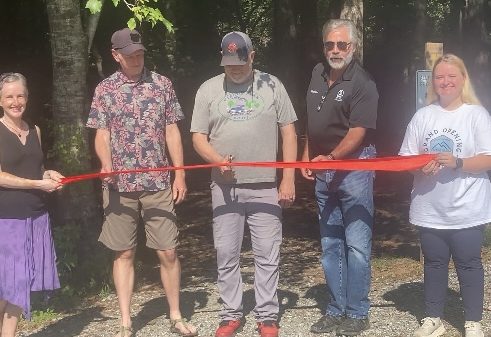Polk County High School hosts mock emergency medical drill
Published 9:40 pm Wednesday, February 17, 2016

Health science students at Polk County High School participated in a mock anthrax emergency medical drill in the gym Feb. 11 with the Rutherford Polk McDowell Health Department. The department is required to hold a multi-faceted drill every four years to determine for the state what their plan is in the event of a mass virus outbreak. An estimated 425 people can be medicated by the department in such an event in Polk County alone, according to Emergency Preparedness Coordinator Karen Powell. (Photos by Michael O’Hearn)
By Michael O’Hearn
michael.ohearn@tryondailybulletin.com
Polk County High School hosted the Rutherford Polk McDowell Health Department’s mock emergency medical drill on Thursday.
The drill, which dealt with what the district would do in the case of an anthrax outbreak, incorporated the high school’s health sciences students and the district’s personnel and dispensed lifesaving medications to participants.
Emergency Preparedness Coordinator Karen Powell works for the health district and said this plan needs to be executed every four years to determine what needs to happen in an epidemic.
“We have to practice our plans to mass medicate the population of the county and we have to exercise those plans every four years to make sure they work the way we say they are going to on paper,” Powell said. “We need to do that to determine what it would be like, who would be where, what our roles are as public health and what agencies we would need to deal with in the case that we needed to mass medicate the community.”
The health sciences students at the high school went through the full scale drill by first filling out paperwork, having a team of personnel review the paperwork to determine which medications they need and then receiving the medication at the end.
Along the way, translators helped participants who do not speak English as their first language fill out their paperwork and first aid services were provided to those who needed the help. Multiple departments from the district’s three counties played roles in the drill to assess all facets of the response plan.
“We used the health sciences students as our players, and they would fill out their paperwork and they will be dispensed the medicine, whatever that would be, that we would be dispensing for the event,” Powell explained. “They will be educated on that event and the reason that we were using them is that, for Polk County, we have to medicate so many people per hour in order to get the whole county medicated in a certain amount of time.”
The personnel helped expedite the process by assisting the 50 health sciences students through the drill, some going through the drill themselves, and the cycle repeated itself for an hour on Thursday morning. If the participant exhibited allergies, personnel administered Cipro to the patient and doxycycline was given to those who had been exposed to anthrax.
According to Powell, the district can medicate 425 Polk County residents an hour in a real event.
In the case there is the potential for a major outbreak, such as the H1N1 virus of 2009, Powell said the district would have to tap into the state’s strategic stockpile for more medicine if the district felt there would not be enough to administer to the public.
“I don’t think a lot of time people realize what the health department is and what it does,” Powell said. “It will help raise awareness to them all the things that we do, you know, because we don’t just do vaccines and family planning. I hope this will show them the big scale of what we’re responsible for and how the community will find out, for instance, how to go to their dispensing site and what medicines to get.”
James Hines Jr. is the district’s director and said the event as part of the district’s Public Health Preparedness education service has been used as a safety precaution for various outbreaks and natural disasters since 9/11 and the 2001 anthrax attacks.
“I think the risk for us, if you’re looking at it administratively, is that this is a three country district, and I have everyone here (at Polk County High School) from all three counties,” Hines said. “What happens if this same incident occurs in McDowell as well as Polk? We will have to stretch our capacity and have more volunteers in the areas. This helps us look at numbers and how much we can take and how many people we really need.”
According to Hines, the success of these drills comes down to the level of training the personnel has.
“We look at anything that deals with the public biologically,” Hines said. “I think the most emphasis that we see in public health would be all of our staff being trained. People would come to the front door of the health department bringing with them white powder with the anthrax attacks and we had no clue what it was. No one did. Now, you can’t walk into a health department without some kind of assurance that that’s going to be decontaminated.”





